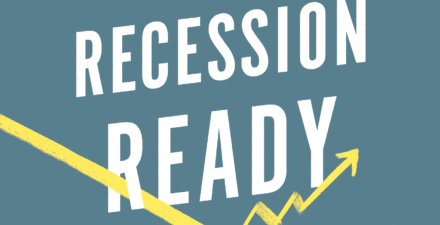Brad DeLong: Worthy reads on equitable growth, February 1-7, 2020
Worthy reads from Equitable Growth:
- And it’s monthly jobs day! Read Kate Bahn and Austin Clemens, “Equitable Growth’s Jobs Day Graphs: January 2020 Report Edition,” in which they write: “On February 7, the U.S. Bureau of Labor Statistics released new data on the U.S. labor market during the month of January. Below are five graphs compiled by Equitable Growth staff highlighting important trends in the data. Prime-age employment-to-population ratio increased to 80.6 percent in January, reflecting a healthy labor market 10 years into the expansion.”
- Claudia Sahm is making the podcast circuit. Definitely worth listening to. Tune into Tracy Alloway and Joe Weisenthal, “This Is How to Use Fiscal Stimulus to Stave Off The Next Recession,” in which they open with: “There’s a growing consensus that governments need to act more aggressively in using fiscal policy to stave off the next recession, and that monetary policy simply isn’t powerful enough. But how do you actually go about it? What do you spend the money on, and how do you get politicians to disburse it in a timely manner? On this week’s Odd Lots, we speak with Claudia Sahm, a former Fed economist who is now at the Washington Center for Equitable Growth, on ways to systematize and automate an early and aggressive fiscal response to economic weakness. Sahm has achieved fame for her so-called “Sahm Rule” which can provide policymakers with an early warning sign of when a recession might be brewing.”
Worthy reads not from Equitable Growth:
- The early February report on the change from December to January in the U.S. employment situation is never worth a great deal because there are big and variable seasonal factors that affect both the December and the January levels. But it looks good. The (small) manufacturing recession continues to fail to spill over into the rest of the economy, which continues to add jobs without straining people’s willingness to set to work at current real wage rates. Labor-force participation begins to rise. And it begins to look more and more as though all the claims over the past two decades that labor-force participation for U.S. workers ages 25 to 54 years old was on the decline—that fewer prime-age Americans needed and wanted to work—was simply wrong. It was the awful barely-recovery that started in 2009 that pushed prime-age labor-force participation down from 2010 to 2014, not any secular or structural trends. Check out the U.S. Bureau of Labor Statistics, “Employment Situation Summary,” in which they report: “Total nonfarm payroll employment rose by 225,000 in January, and the unemployment rate was little changed at 3.6 percent, the U.S. Bureau of Labor Statistics reported today. Notable job gains occurred in construction, in health care, and in transportation and warehousing.”
- The repeated waves of automation in manufacturing eliminate—or at least severely reduce the salience of—tasks. Whether those waves amount to “deskilling” on the level of occupations is a subtle and empirical question, for what tasks make up on occupation and how those tasks can shift about without destroying the occupation is a complicated and subtle thing. We do not have a good handle on this, theoretically or conceptually. But here we have the smart and hard-working David Kunst doing useful work. Read his “Deskilling Among Manufacturing Production Workers,” in which he writes: “Has technological progress in manufacturing been skill-biased or deskilling? This column argues that the conventional distinction between white-collar and production workers has concealed substantial deskilling among manufacturing production workers since the 1950s. Automation has reduced the demand for skilled craftsmen around the world, thereby reducing the number of jobs in which workers with little formal education could acquire significant marketable skills.”
- Here’s a sophisticated look at some of the issues around the “wealth tax” that we do not (yet) have a good handle on. Read Josh Gans, “Does Being Rich Make You Better at Allocating Capital?,” in which he writes: “While we can all agree that the wealth tax likely deters risk-free saving, where the money actually goes otherwise is quite open. It could go to consumption, which will cause actual resource use in ways that are certainly not in the direction people concerned with redistribution would like although just how much of that there can be given that the wealthy haven’t managed to do that spending previously is arguable. It could go to philanthropy, which is a form of consumption (at least from the point of view of the donator) and is something that could be beneficial (but we have to consider whether the wealthy are the most productive to make those decisions—more on that another time). Or it could go to political influence, which is a mixture of consumption (the naked expression of power) or investment to help them get wealthier (the well-dressed expression of power) but in actuality depends on how much other rich people are spending on these activities in terms of the potential return (a complicated game). Finally, where the money could go is to riskier investment because at the margin this is now more attractive than risk-free investment.”






